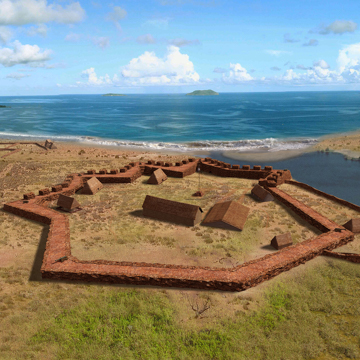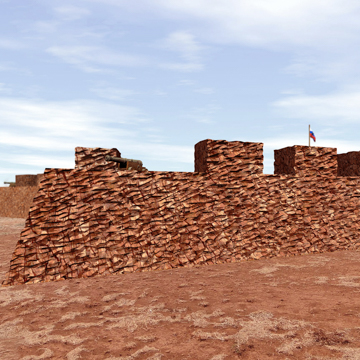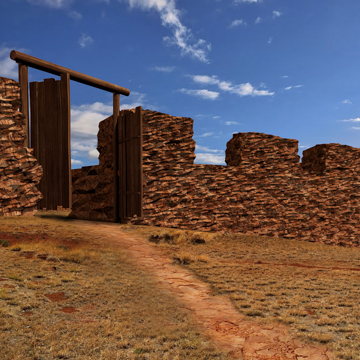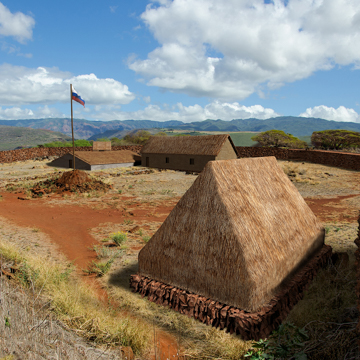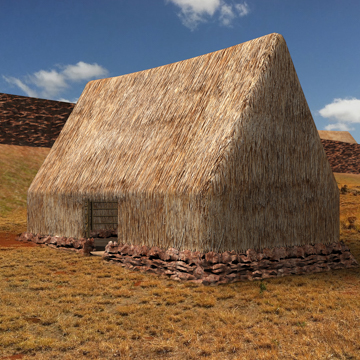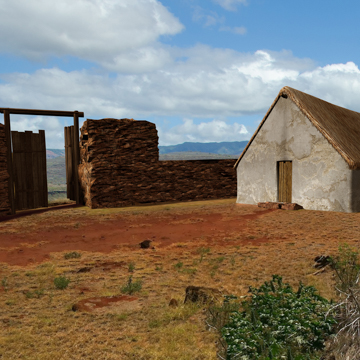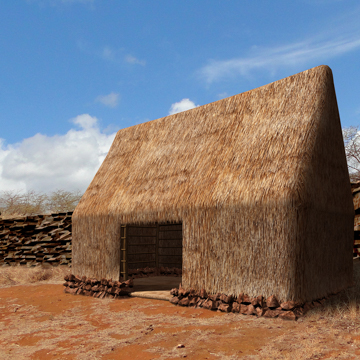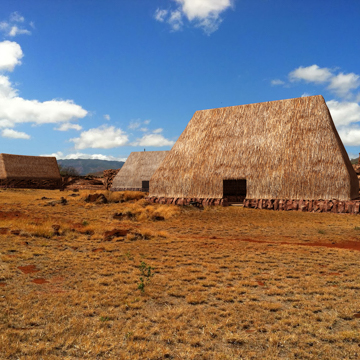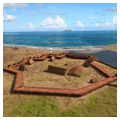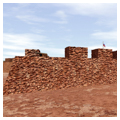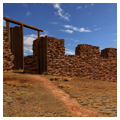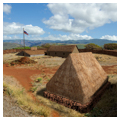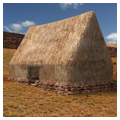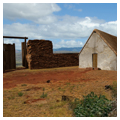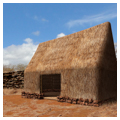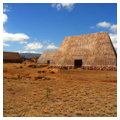Overlooking the mouth of Waimea River, the lava-rock ruins of Russian Fort stand as an unfulfilled dream of empire. Construction of the fort commenced under the direction of Georg Anton Schaeffer. This German surgeon came to Hawaii on behalf of the Russian-American Company and successfully negotiated a settlement for the goods removed from one of the company's ships which had shipwrecked off Waimea in 1815. In the course of his negotiations, Schaeffer, thinking Russia might ultimately colonize Hawaii, entered into a secret treaty with Kaumualii, pledging Russian military support for this Kauai aliʻiʾs intended rebellion against Kamehameha for control of the Hawaiian Islands. Work on the fort began in September 1816. Before it could be completed, Kamehameha ordered Kaumualii to rid Kauai of all Russian associations, and on May 8, 1817, Schaeffer was expelled from the island. After his departure, the Hawaiian government completed the half-finished structure. The fort remained in operation until 1864, when it was abandoned. Its ruins became a state park in 1970.
The fort follows traditional Hawaiian building methods and employs no mortar. It is three hundred feet in diameter and its stone wall averages twelve feet in height. The wall consists of a rubble-filled core with a stacked basalt boulder face. The makai (ocean-facing) wall, with its star pattern, reflects a common seventeenth-century European fortification design.


